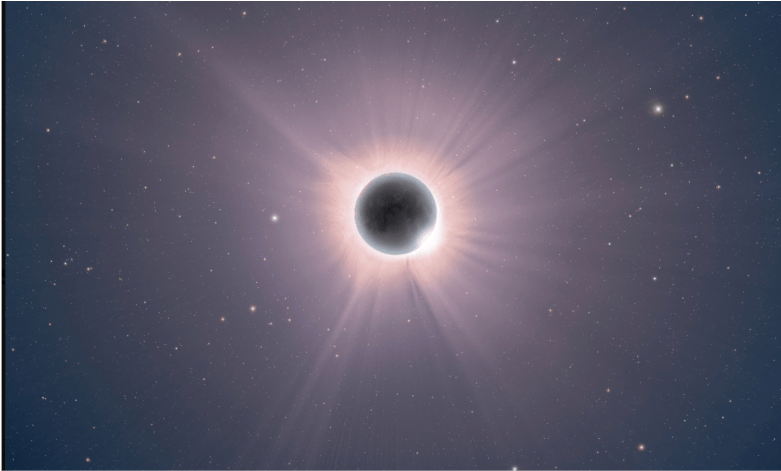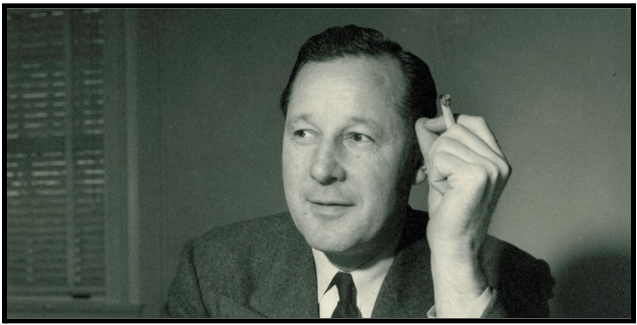Experiencing wonder is a key to fulfillment, happiness, and connection. We can incorporate it into our lives.
Talking Big Ideas.
“The most beautiful experience we can have is the mysterious. It is the fundamental emotion which stands at the cradle of true art and science.”
~ Albert Einstein
Maryrose and I experienced awe this week.
We gathered with family in my brother John’s backyard in Ohio to watch the full solar eclipse. For about an hour before the big event, we had fun occasionally tossing on special glasses to see the moon cutting in front of the sun.
But the precise moment the eclipse moved from 99% totality to 100% totality—when the moon fully blocked out the sun—was truly awe-inspiring. The writer Tim Urban says it changes from “mildly interesting” to an “indescribably profound, perspective-shifting, life-altering experience.”
Here’s an image from this week’s eclipse that captures the difference:
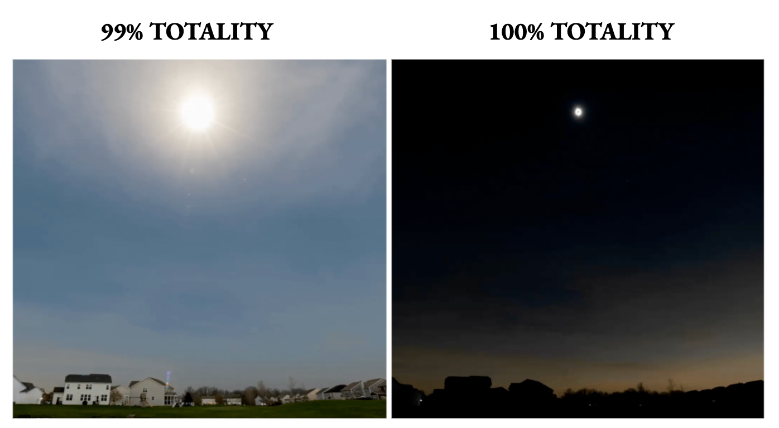
The bright sunny day suddenly plunged into a cold darkness as if demons escaped from the underworld. It felt supernatural and haunting. The sun disappeared, along with all my thoughts and worries. Past and future dissolved.
I was left fully present and spellbound.
In 2017, I drove with my brother Scott from DC to Spring City, Tennessee, to see my first full solar eclipse. We met up with some buddies and watched together from a river. Everyone agreed the experience was amazing and vowed it would not be our last.
Our universe contains about two trillion galaxies, which collectively house a mind-bending 70,000,000,000,000,000,000,000 [seventy sextillion] stars. Yet Earth is the only place in the universe we know of with full solar eclipses. This is because we have the incredible fortune to be blessed with a moon 400 times smaller than our sun while also being 400 times closer to us. When they align, the fit is perfect and magical.
There are about 70 full solar eclipses a century. The United States won’t see another for twenty years. The next ones will pass through Spain (2026), Egypt (2027) and Australia (2028). People worldwide will travel to witness them.
The captivating nature of a full solar eclipse drives home the power of experiencing awe.
More than twenty years ago, two friends named Jon Haidt and Dacher Keltner began to seriously study this mysterious emotion. They immersed themselves as best they could, published their findings, and gave awe its first formal definition:

Today they are world-famous psychologists and authors. Jon Haidt just released the popular bestseller, The Anxious Generation, while Dacher Keltner runs an emotion lab at Berkeley and recently published a delightful book called, fittingly, AWE.
Haidt explains in The Anxious Generation that a tidal wave of anxiety has come crashing upon young people worldwide. He argues that anxiety harms self-esteem and social development while increasing one’s susceptibility to peer pressure, conformism, and even suicide. This “surge of suffering” comes from “two big mistakes we’ve made: overprotecting children in the real world . . . and underprotecting them online.”
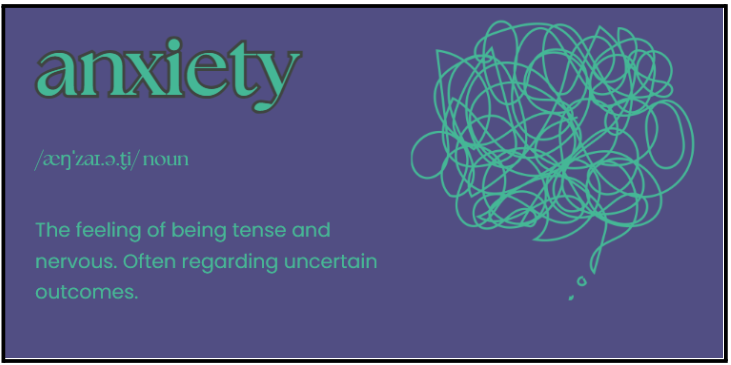
We all experience anxiety, and Haidt gives us plenty of tools to combat it. My favorite is his guidance to spend less time embroiled in online status games and more time enjoying the real world by playing unplugged outside and experiencing awe.
Haidt had students in his NYU Flourishing class engage in simple “awe walks” outside. They had to slowly walk anywhere they wanted but couldn’t bring their phones. Haidt says their reflections afterward “were some of the most beautiful I’ve seen in my 30 years as a professor.”
The students noticed for the first time the details of old buildings, trees, and parks that they had walked past countless times before. Many of them enjoyed mental and physical benefits from a brief exposure to awe.
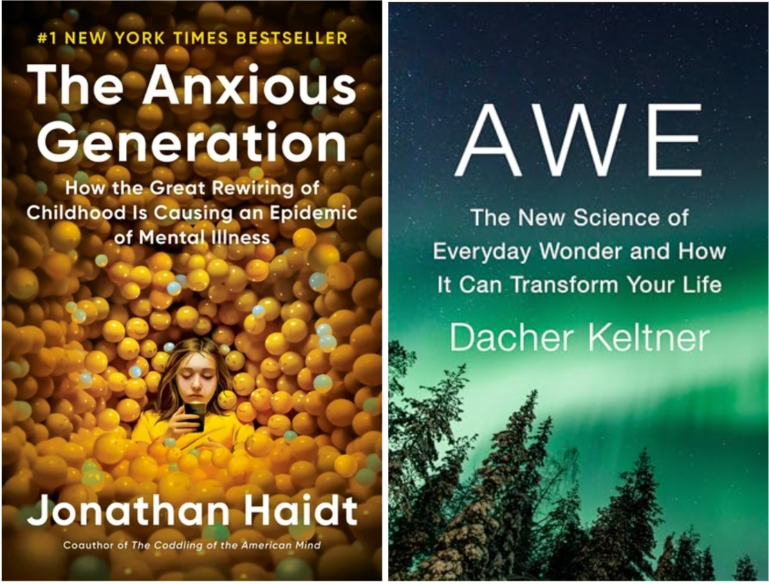
In AWE, Dacher Keltner asks:
“How can we live the good life? One enlivened by joy and community and meaning, that brings us a sense of worth and belonging and strengthens the people and natural environments around us?”
His answer is simple: “Now, twenty years into teaching happiness, I have an answer: FIND AWE.”
Humans are driven by awe to create communities and cultures – and to cooperate within them. Awe opens our minds to big ideas and helps us think rationally. It moves us to connect, share, and act beneficially towards our families and tribes as well as our broader society. We are inspired by awe to protect the environment, build beautiful things, and make music and art.
Awe shrinks our stresses while improving our social, emotional, physical, and psychological well-being.
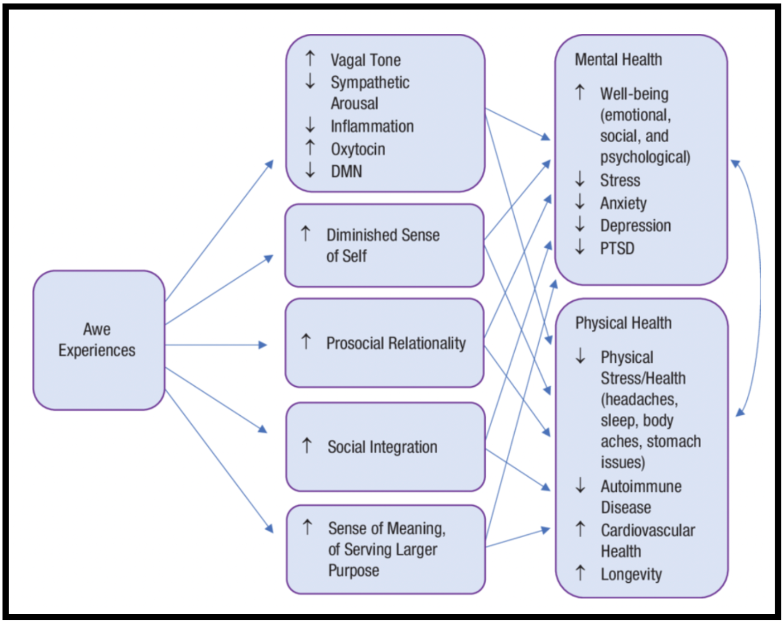
Haidt’s students show that we don’t need to travel across the world to the next full solar eclipse to experience awe – though I recommend it!
Keltner writes, “Finding awe is easy if we just take a moment and wonder.” He says that “we have a basic need for awe wired into our brains and bodies,” and just a couple minutes each day is all we need. “Brief moments of awe are as good for your mind and body as anything you might do.”
Consider awe your personal anxiety slayer.
Anxiety shirks in the face of awe, replacing worry with wonder. Keltner explains that we can experience awe in eight distinct ways, many of which can be easily incorporated into our daily and weekly routines.
He calls them the Eight Wonders of Life.
#1. MORAL BEAUTY
The courage, kindness, overcoming, and strength of others.
Moral beauty is the most common way people experience awe worldwide. We feel awe when we hear stories about virtue: the courage, kindness, overcoming, and strength of others.
Consider Nicholas Winton, a British humanitarian who saved 669 children from the Holocaust. The touching clip above, orchestrated by the BBC, shows Winton being surprised by a room of people he saved.
Every day we can take a moment to appreciate moral beauty. We can read about or watch a video on Mandela, Malala, or Washington. A couple of minutes of exposure to Harriet Tubman, Paul Rusesabagina, Witold Pilecki, or any of the other countless heroes throughout history will give us a jolt of awe.
#2. COLLECTIVE EFFERVESCENCE
The transcendent unity of being in harmony with others.
Take a few minutes to watch this guy start a dance party at the Sasquatch Film Festival.
What are your first thoughts? I judge him immediately and think he’s awkward. But by the end of the clip, I love what he’s doing and want to join.
Collective effervescence is the electric buzz we experience when we unite around a common cause or joy. It’s the synchronicity we experience while dancing or moving together at a concert, the shared reverence in a sporting event or religious service, as well as the warmth of a family reunion—moments when everyone’s riding the same high wave of energy and belonging.
Last night Maryrose and I enjoyed a weekly dance party at our local country bar. Six of our friends joined us. There’s a competing ecstatic dance party at the same time every week that other friends swear by.
We also have many churches, a Dharma Center, meditation gatherings, and regular concerts. Small towns like Durango have plenty of opportunities to enjoy collective effervescence, and big cities have endless options.
#3. NATURE
The healing force of the wild and natural world.
Maryrose enjoying stillness in nature the night before the moose arrived.
I’ll never forget the first time I saw moose up close. Maryrose and I were alone in the Utah wilderness in an Aspen grove near a partially frozen pond. We were sleeping in a tree hammock and awoke to a family of moose playfully clomping together across the icy water. It was amazing.
Mountains, forests, and wildlife command awe, as do vivid sunsets, the Northern Lights, and starry nights. Caves and coral reefs can fill us with wonder. Oceans, rivers, and waterfalls showcase the raw power of water, while volcanoes, hot springs, and geysers reveal the earth’s mysterious inner heat.
Maryrose and I moved to Durango partly because of its incredible natural beauty. But as Haidt’s students learned, simply unplugging and walking slowly around your neighborhood will do the trick.
#4. MUSIC
The communal embrace of sound ordered in time.
Bach induces awe. Consider this masterpiece by the Netherlands Bach Society of Bach – Mass in B minor.
I was with my dad in his workshop this week, listening to a playlist of his favorite songs and seeing how much he enjoyed them. I encourage you to make your own playlist and listen to it often. Sing along in the shower. Whenever you feel anxiety creeping in, take a moment to immerse yourself in your music.
One of my favorite ways to de-stress is with Krishna Das’s album Pilgrim Heart. I challenge you to lie down, close your eyes, and listen to the fourth song, Mahamantra Meltdown, and not feel your stresses melt away.
#5. VISUAL DESIGN
The sacred geometries of wonder.
Have you been to Egypt?
I haven’t and can only imagine the awe it inspires. Maryrose and I went to Florence last spring with my mom, and the stunning architecture, the Renaissance paintings, and Michelangelo’s Statue of David all filled us with awe.
Bridges, cathedrals, complex machines, temples, and even jewelry can do the trick. Every day we can make it a habit to spend time with a favorite piece of art, a beloved visual design.
#6. SPIRITUAL & RELIGIOUS AWE
The moments of nirvana and the fundamental It.
We all understand that religious conversions and spiritual awakenings are powerful. Many of us have been fortunate to experience what William James, the father of modern psychology, called “the fundamental cosmic It, or mystical awe,” an enveloping connection to something Divine, blissful, and transcendent.
I didn’t realize until reading Keltner that we can tap into this power of spiritual awe with a simple warm embrace or a loving hug. Even a moment of feeling understood or truly seen can fill us with connective spiritual awe.
Every day we can all commit to giving a loved one a warm embrace and helping others to feel understood and seen.
#7. STORIES OF LIFE & DEATH
The mysterious transitions into and out of life.
I encourage you to watch this powerful clip from the movie Children of Men [SPOILER ALERT!], where humanity is dying because no babies have been born for decades. A woman miraculously gets pregnant and gives birth, and this scene depicts people’s reactions to seeing their first baby in many years, or perhaps ever, while death is happening all around them.
Movies, paintings, books, and real-life experiences can immerse us in the awe of mysterious transitions into and out of life.
#8. EPIPHANIES
The sudden understanding of essential life truths.
In the winter of 1990, the astronomer Carl Sagan asked NASA for a favor.
A shuttle called Voyager 1 was in space. It just finished photographing the outer planets and was about to slip beyond the solar system. Sagan asked: Could Voyager 1 please turn and take a final picture of Earth?
NASA said yes. The photograph is haunting:
A pale blue dot floating alone in a sunbeam surrounded by the void of space. Sagan turned this awe-inspiring image into a book, which became the stunning three-minute video above.
Awe epiphanies hit us with essential life truths. They come from scientific discoveries, philosophic insights, personal realizations, and deep questions. Has the future already happened? Are we at the beginning of infinity? Is Penrose right about Conformal Cyclic Cosmology?
YouTube channels like Kurzgesagt, PBS Spacetime, and Veritasium are factories for awe epiphanies. I encourage you to watch them often.
And anytime you need a quick shot of awe, Carl Sagan is always there for you.
***
We’ll explore in a future piece the powerful role awe can play in your public speaking. For now, I leave you with Standing in Awe with My Wife and Son, a photograph posted online this week, along with a note:
When the next total solar eclipse passes over Fredericton in 2079 and our son is 60 years old, I hope he looks back at this photo and remembers this day.

